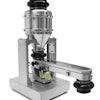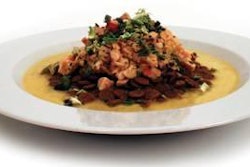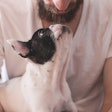The objective of this study was to quantify physical activity and dietary energy intake in 35 dogs enrolled in a controlled weight-loss program and assess relationships between energy intake and physical activity, sex, age, body weight and body condition score. Dogs were fed a therapeutic diet with energy intake restrictions to maintain weight loss of approximately 2% a week. Collar-mounted pedometers were used to record the number of steps taken daily as a measure of activity.
Mean ± SD daily energy intake per unit of metabolic body weight (kg 0.75) of active dogs was significantly greater than that of inactive dogs (53.6 ± 15.2 kcal/kg 0.75 vs. 42.2 ± 9.7 kcal/kg 0.75, respectively) while maintaining weight-loss goals. In regression analysis, only the number of steps per day was significantly associated with energy intake.
Increased physical activity was associated with higher energy intake while maintaining weight-loss goals. Each 1,000-step interval was associated with a 1 kcal/kg 0.75 increase in energy intake.
Source : J.J. Wakshlag et al., 2012. Evaluation of dietary energy intake and physical activity in dogs undergoing a controlled weight-loss program. JAVMA 240: 413-419. doi: 10.2460/javma.240.4.413

















